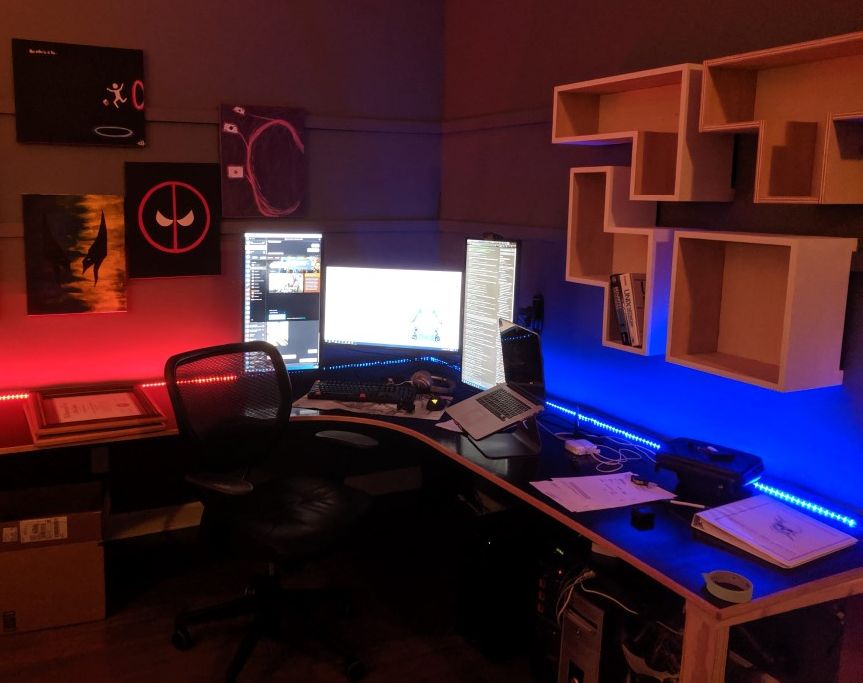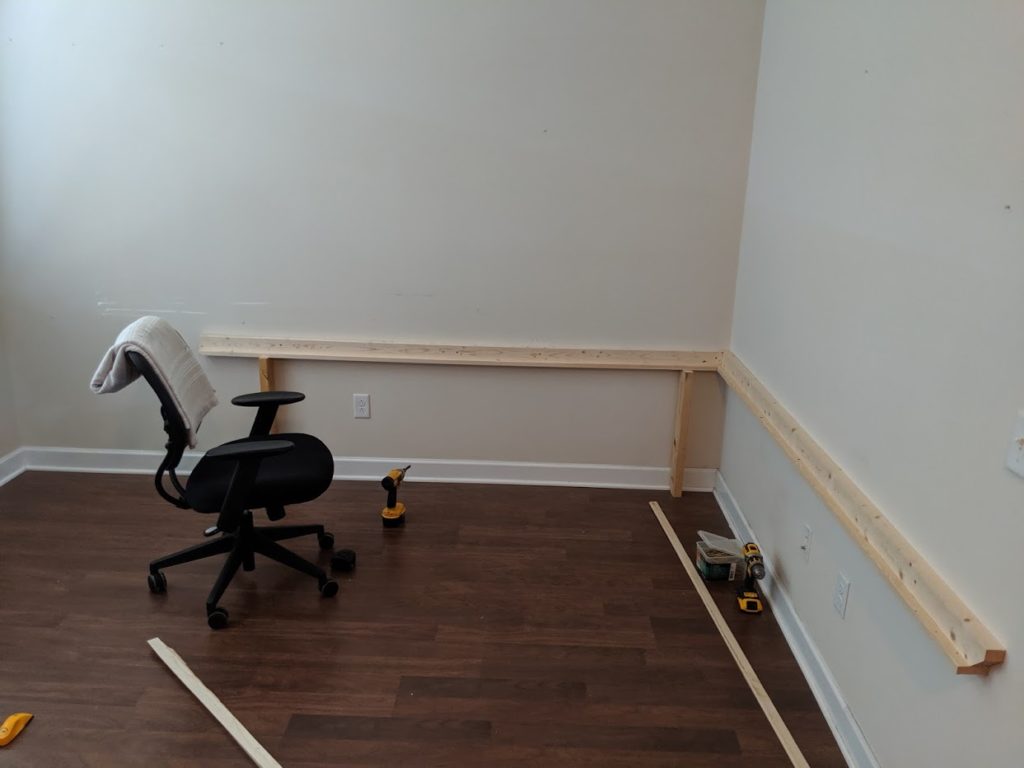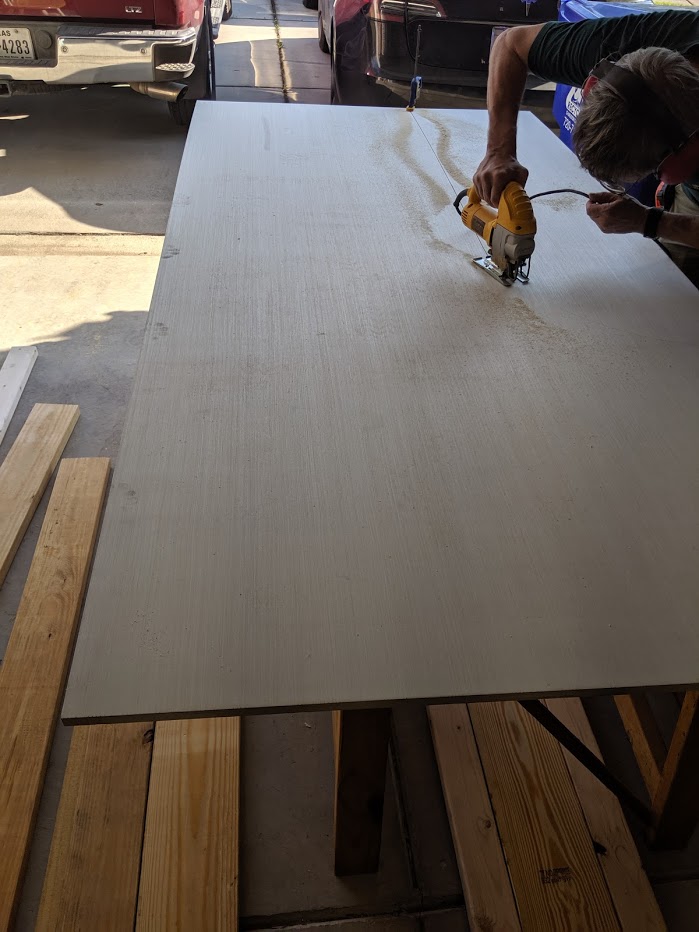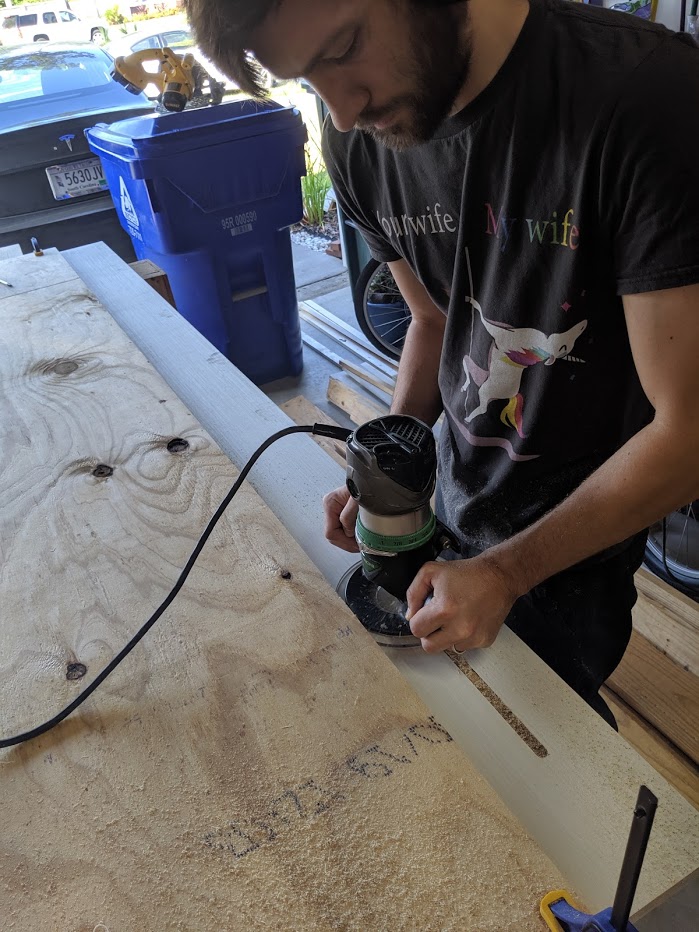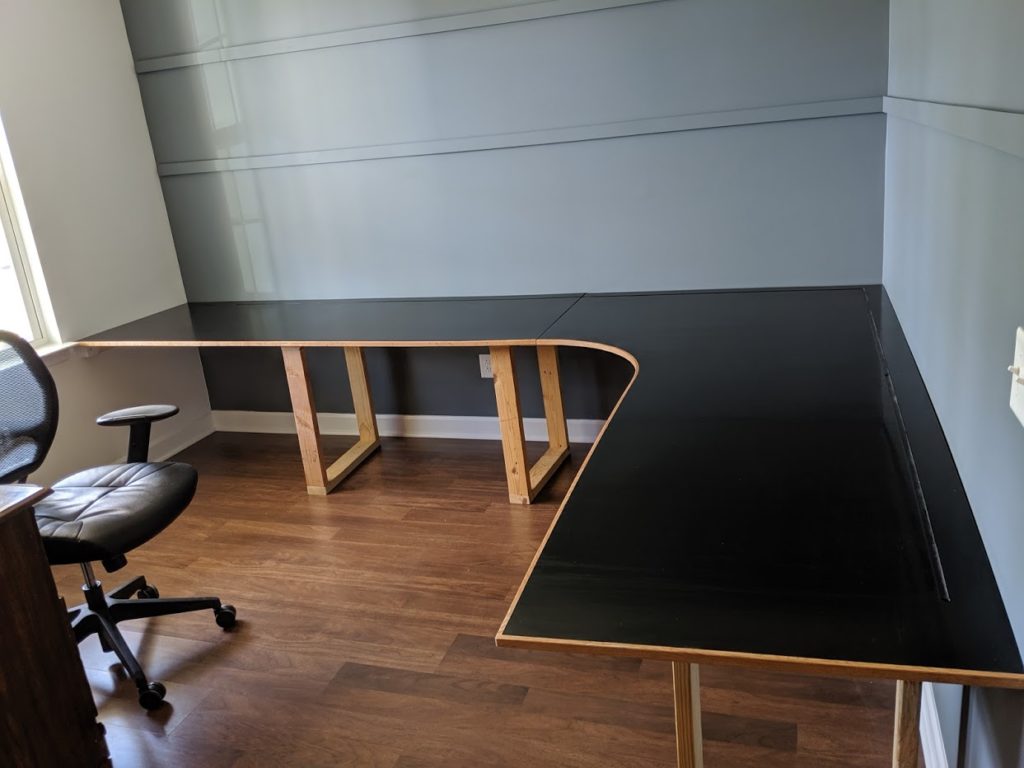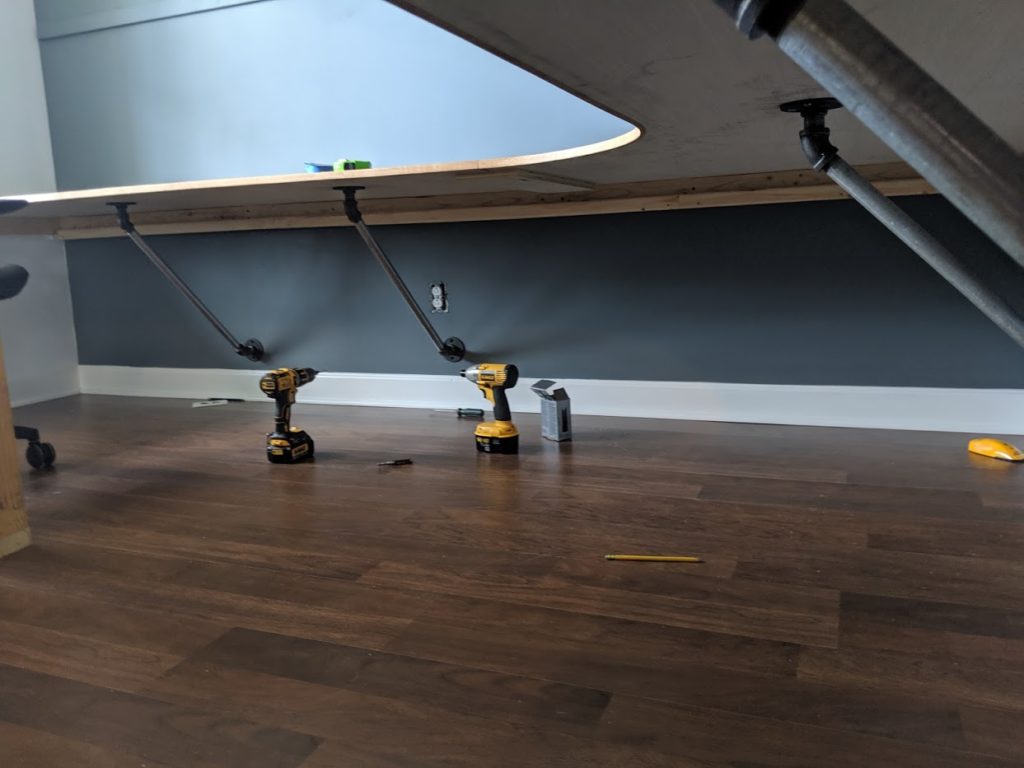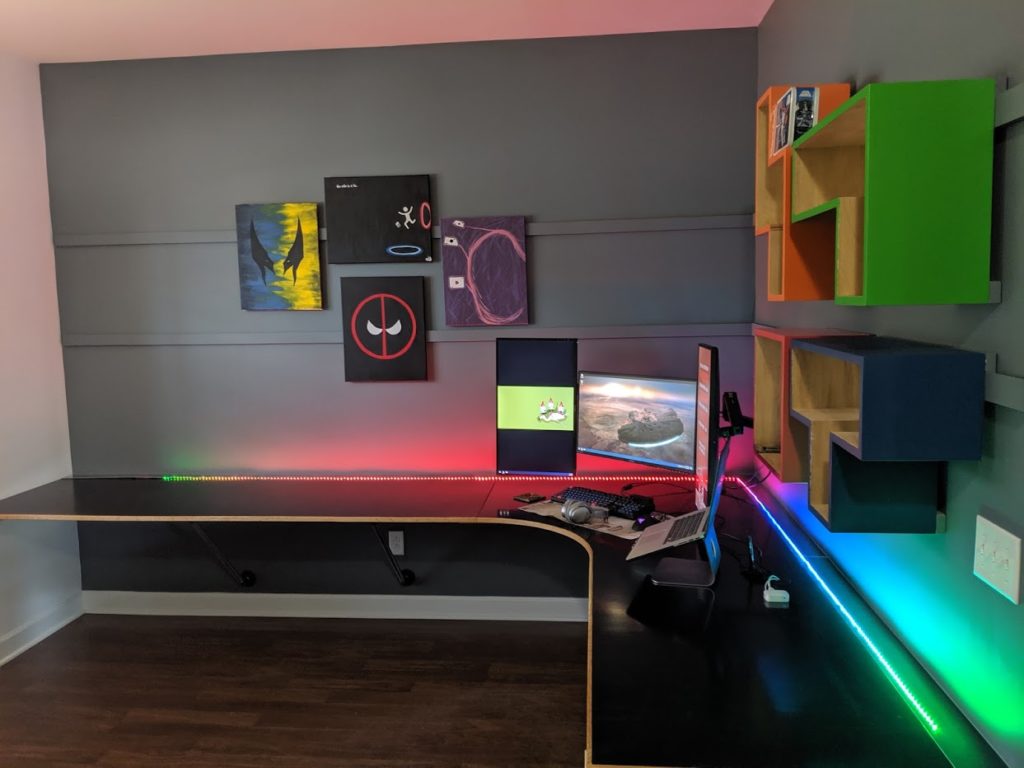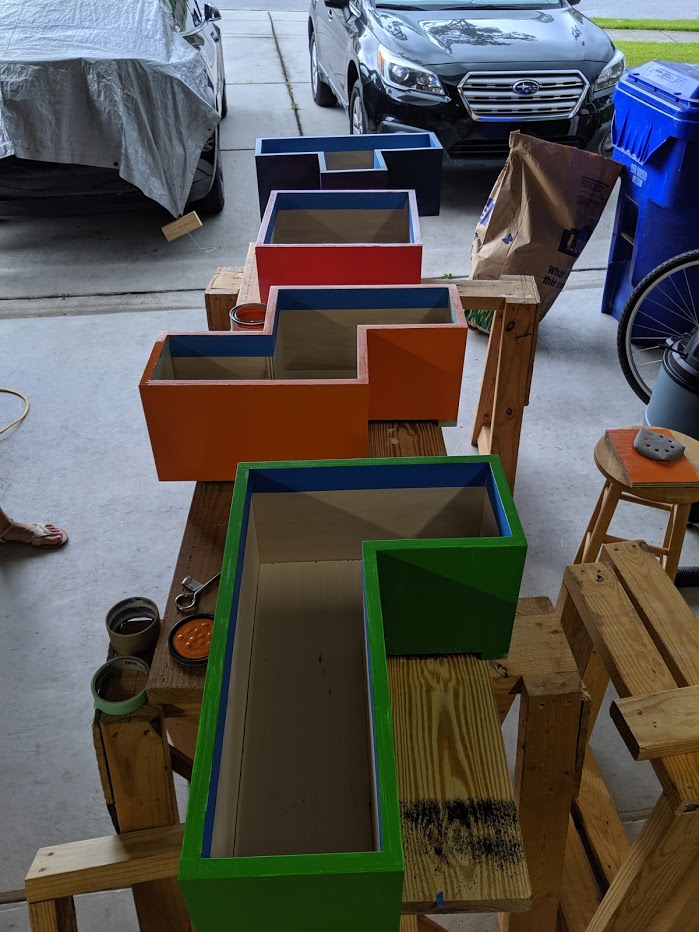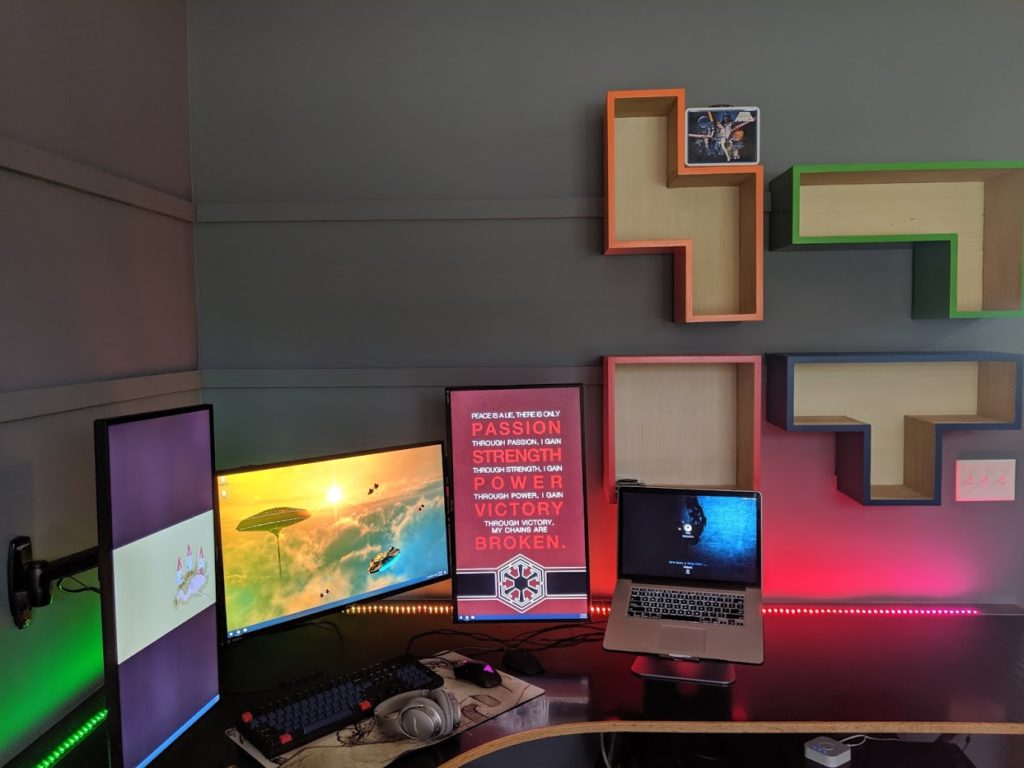
Bekah wanted to replace her entry way flush mount ceiling light globe with a hanging candelabra light fixture. We first made a trip to the Habitat or Humanities RE-store, where we found a used candelabra for $7.00. We patterned the open box design after a $225 wooden fixture she had found locally.

We started the construction process by making the top of the frame 13 inches square with rabbeted ends secured with glue and small screws. The 15 inch vertical corner members had a 3/8 inch rabbet cut their entire length on the inside face. These corners were epoxied to the top frame. A 13 inch plywood square was elevated about 6 inches above the top frame and inserted into the rabbets to keep the assembly square while the epoxy hardened overnight.

Next the a full length diagonal with the mounting holes for the candelabra base pre-drilled was glued between opposite corners of the top frame, and the bottom frame with mitered corners was glued at the bottom of the assembly just above the small 3/8 inch blocks that were inserted into the rabbets at the bottom of the vertical corner members. Lead weights set on the top kept the assembly flat on the work table and added stability to the construction process.

Next, the x-struts were made to fit in two opposing faces of the open structure. Each end of the strut was cut with two opposing 45 degree angles which fit snugly into the rabbets of the vertical frame corners. Half laps were cut in the struts where they crossed so they would be flush and provide additional structural strength.

X-struts were constructed for the remaining two side faces. They butted up against the ends of x-struts constructed for the first two faces.
Trim pieces were added along the top and bottom frame to bring it flush with the vertical corner members.

After letting the glue try overnight, the trim pieces were hand planed flush with the vertical corner pieces. With the exception of the small screws in the top frame, the rest of the assembly is all fastened with just glue.

Here is the frame just before Watco natural oil was applied. All pieces were made of red oak scraps left over from other projects.

Here is the fixture with the candelabra and chain installed with the lights on. Note the interesting shadows on the walls and the contrast between the illuminated and shadowed frame members. The five 25 watt incandescent bulbs in the open fixture provide much more illumination than the two 60 watt bulbs shrouded in the original flush mounted ceiling fixture.
